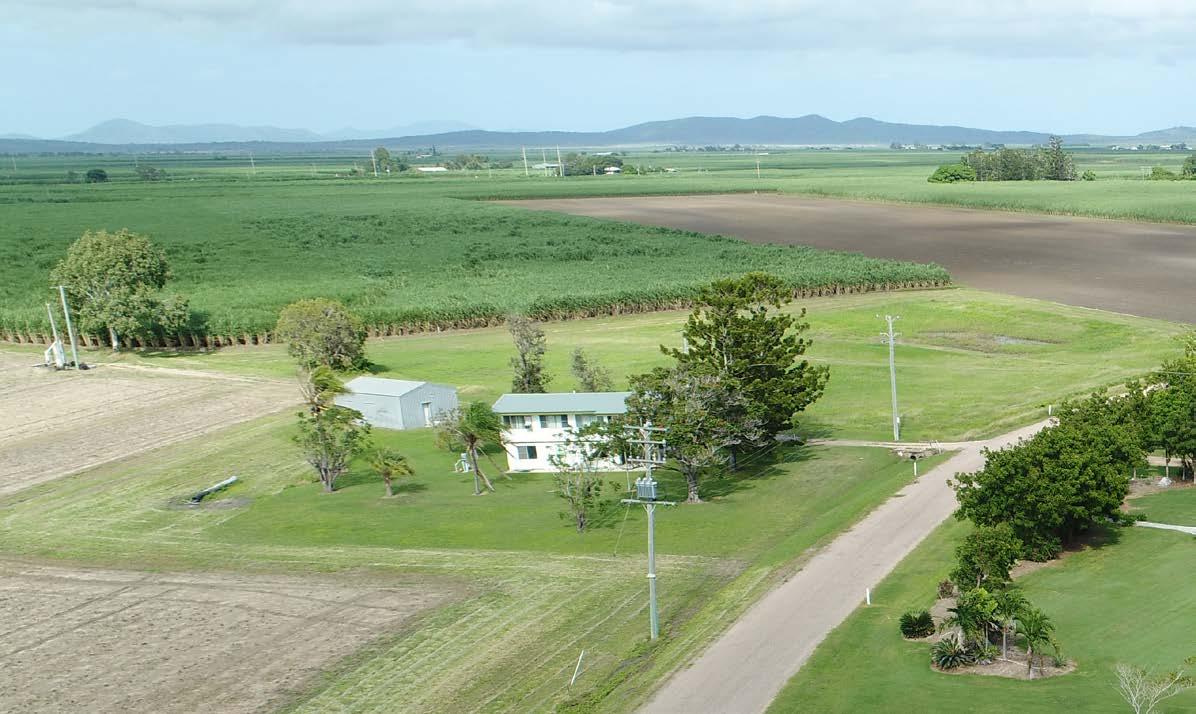
6 minute read
A lifetime of lessons
Lifetime of lessons
For the women and men who pioneered Australia’s sugar industry, hard times such as those being amid the COVID-19 pandemic are not new. On a recent visit to the Australian Sugar Heritage Centre in Mourilyan, Australian Canegrower sat down for afternoon tea with a group of cane farming elders from the Innisfail district … and listened … as lessons about resilience and respect were shared.
Advertisement
“It was a hard life, but it was a happy life. There was something about it… everybody was the same,” Mary Marano recalled of her earliest years growing up in the cane fields of the Innisfail district.
It was a childhood filled with oldfashioned hard yakka for the mother of CANEGROWERS Innisfail Chairman Joe Marano.
In the season, days would begin with cane knife in hand slicing ‘chop-chop’ or cane leaves to feed the horses. It was dangerous work, especially for children who could easily slice a toe while working
BY JOHN FLYNN
their way along the rows of hand-cut sticks, or lose a finger feeding cane trash into a chaff cutter.
That was before heading to school for the day, then returning home to a fresh round of chores in the evening. “I don’t know how we didn’t chop our feet while chopping the cane,” Mary recalled. “Honestly, I reckon the good Lord must have been looking after us.” In her youngest years, when the family lived at the foot of the Basilisk Range, Mrs Marano remembers heading up into
the hills behind the cane fields on the darkest nights to collect cane beetles. “Our father used to carry a long ladder and me, like a fool, went up there too at night-time with my mother and a tent,” Mary remembered. “They’d go up the tree and shake the tree and with the carbide light all the beetles would come there and then you’d pick them up and place them in a drum and the next morning you’d take them to the mill and get five pence a pint. “In the morning, before the sun came out, you’d go through the cane and pick them off the leaves of the cane because once the sun came out, they’d go down. “You can see why I enjoyed going to school!”
The recollections sparked a flood of memories from the group at the gettogether at the Australian Sugar Heritage Centre in Mourilyan. Still whip-smart at 92, Marge Bisbal recalled her earliest years on the family farm at Nerada in the foothills of the Palmerston Range, where her English immigrant father set to work carving out cane blocks from the scrub.
Women and children would share the workload, including planting cane by hand.
“We used to dig holes in between the stumps and put the stick of cane in,” Marge recalled. “Then when the stumps all got burnt away, they made drills. “Dad threw the cane in the drills and my sister and I cut it up in the drills, then we scarified it in with the one horse and the scarifier.”
Also eager to share their stories were two of the Innisfail district’s most senior growers Dino Della Mattea and Pietro Angelini.
Still referring to himself as a ‘new Australian’, Pietro’s story is a lesson to anyone in today’s economic climate on the importance of grit and determination.
One of the district’s most respected cane growers, he arrived in Melbourne from Italy in 1961, aged 20, with just a passport and the clothes on his back, and speaking almost no English.
With no family to support him, Pietro worked on a construction site in Melbourne for two months before heading north to cut cane by hand in Babinda for three years while raising enough cash to start his own farm.
Growing up in Italy on a mixed farm where he worked from a young age, Pietro was determined to carry on the farming tradition in Australia and wasn’t afraid to roll up his sleeves and have a go.
“I cut cane for three years with cane knife and shoulder loading,” Pietro recalled.
“Some of the cane had to be cut in three pieces because of the flooding, but we were cutting for good people and that made it easy work.
Continues next page
Pictured: (main) Dino & Lucy Della Mattea, Pietro & Mary Angelini, Mary Marano, Marjorie & Stephen Bisbal (Stephen is Marjorie’s son), (right) 1931-32 Nerada Farm Cane Gang, Badilla Cane.

“It was very hard, the skin was peeling on the arm, blisters everywhere, but we persevered, never lost a day.” Pietro eventually raked in enough cash to buy a block of virgin scrub in the Cowley district and with the support of his beloved wife Mary. He set about carving out a place of his own, digging out tree stumps to establish blocks for growing cane and carrying with him lessons learnt across generations of farming. “My Nonno told me how to treat the land. You have to grow things and respect your soil and do certain things. “I’ve never ever forgotten that,” Pietro said.
Pietro’s great mate Dino still rates him one of the best growers in the district, given what he achieved off his own bat in one generation. His ability as a farmer is also evidenced by countless category wins for cane at the Innisfail Show.
Heading into their eighties, it’s understandable that both growers, who still work on the farms by choice, would appreciate respect for a lifetime of effort. “I have done a lot of different things in life, such as grow tobacco, peanuts, bananas, sugarcane, earth moving, building, everything but I find nothing as bad as growing cane as far as money is concerned and putting up with today’s bureaucracy and paperwork,” Pietro said. “They point the finger at what you’re doing wrong. “We‘re not doing anything wrong, we do better today than we were doing many years ago.” Dino is the first to admit he’s had a great life growing cane and has no regrets about choosing a life on the farm. At the same time, he’s concerned for the industry’s future in a climate of decreasing margins and increasing regulation. The suggestion that cane farmers might not have the best interests of the Great Barrier Reef at heart also bothers him.
“The way they portray it is as though we’re doing nothing and we’re decimating everything and it’s just not right,” he said. “It sticks in your craw because when you’re doing everything possible and we’re always trying to better ourselves, as everybody else does, but no-one seems to understand it.”
One thing Dino is sure of is that there is a role for CANEGROWERS moving forward as a body to represent growers and the industry. He’s looking to advocates like his local CANEGROWERS Innisfail Chairman Joe Marano to continue airing the industry’s viewpoint by leveraging the respected place at the table that CANEGROWERS has always had in the corridors of power, irrespective of which party is in government. “You always whinge when you look at the levies, but it’s something we have to have,” Dino said.
“When you start to get people talking about the reef and they are not practical people, they are theoretical people and it’s all on theory, you’ve got to have someone that’s game to go against them," he says talking about CANEGROWERS advocacy for growers. “You’ve got to be positive in what you say and stick to it.
“We’re doing our best and always striving to do better.”
Pictured: (right) Dino Mattea and Pietro Angelini.











